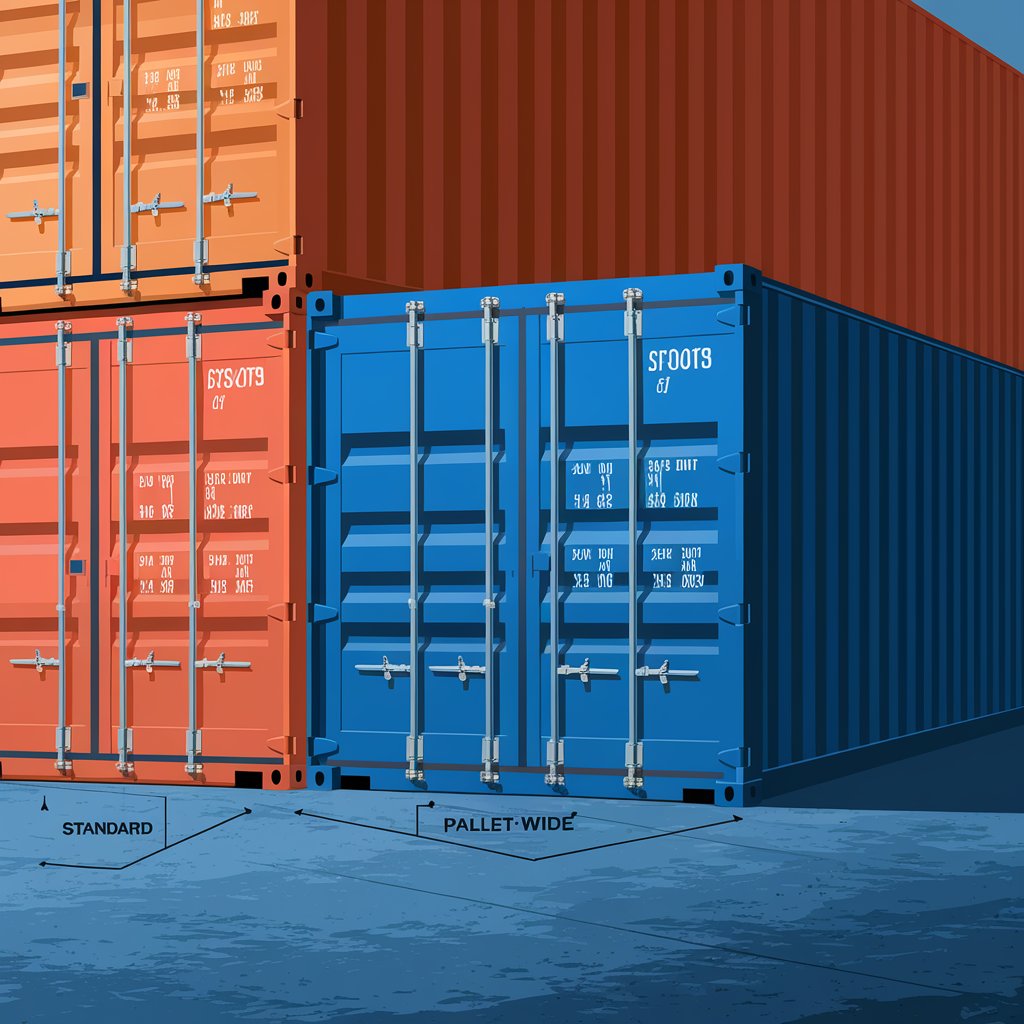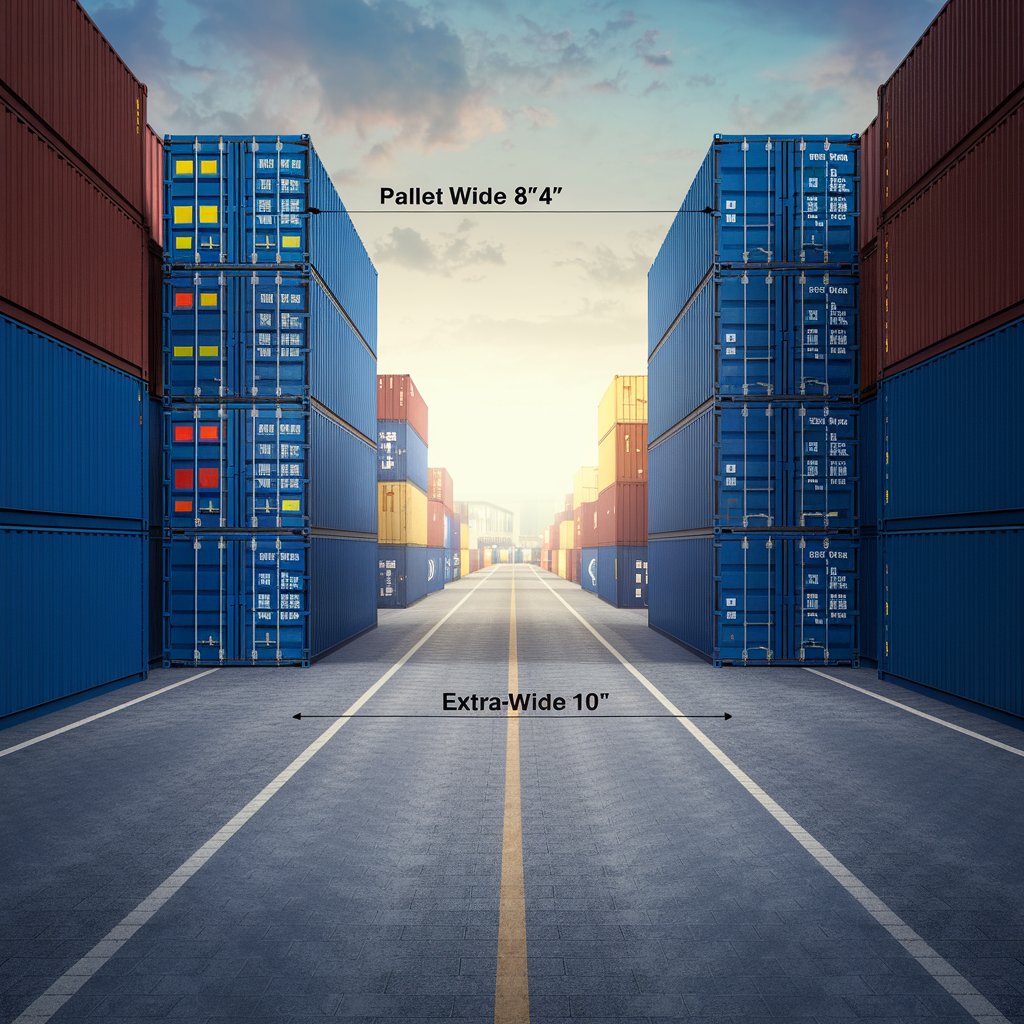Everything You Need to Know About How Wide Is a Shipping Container
This article provides a detailed breakdown of shipping container widths, explaining their practical applications, common sizes, and key considerations for businesses.

How Wide Is a Standard Shipping Container?
The standard width for most shipping containers is 8 feet (2.44 meters), allowing them to fit efficiently on trucks, trains, and cargo ships.
Container Type | Width (External) | Width (Internal) | Best Used For |
20-Foot Standard Container | 8 ft (2.44m) | 7 ft 8 in (2.34m) | Small shipments, heavy goods, site storage |
40-Foot Standard Container | 8 ft (2.44m) | 7 ft 8 in (2.34m) | Bulk cargo, warehouse storage, large shipments |
40-Foot High Cube Container | 8 ft (2.44m) | 7 ft 8 in (2.34m) | Tall cargo, industrial machinery |
45-Foot High Cube Container | 8 ft (2.44m) | 7 ft 8 in (2.34m) | E-commerce storage, oversized shipments |
👉 Key Fact: The internal width of a shipping container is slightly smaller than the external width due to the thickness of the container walls.
Are There Wider Shipping Containers?
Yes! While 8 feet is the industry standard, some specialized containers are wider to accommodate larger cargo.
1. Pallet-Wide Containers (8 ft 4 in / 2.50m)
✅ Designed to fit European pallets more efficiently.
✅ Used in European logistics and intermodal transport.
2. Extra-Wide Containers (10 ft / 3.05m)
✅ Used for industrial storage and modular construction.
✅ Often converted into container homes and offices.
3. Customized Containers (12 ft+ / 3.66m+)
✅ Built for oversized cargo or specialized projects.
✅ Not commonly used in standard freight shipping.

Why Does Shipping Container Width Matter?
✅ 1. Determines Cargo Capacity
- Affects how much product can be loaded per shipment.
- Influences the number of pallets that fit inside.
✅ 2. Impacts Transportation & Handling
- Standard-width containers fit easily on trucks, trains, and ships.
- Wider containers require specialized permits and handling.
✅ 3. Essential for Storage & Warehousing
- Helps maximize storage space in warehouses.
- Affects container stacking configurations.
Shipping Container Width in Different Uses
1. Freight Shipping & Logistics
📦 Standard 8 ft wide containers dominate international trade.
🚛 Pallet-wide containers improve space efficiency in trucking.
2. Modular Homes & Offices
🏠 Wider containers (10 ft+) are used in container homes.
🏢 Converted for temporary office spaces and retail shops.
3. Industrial & Construction Storage
🔨 Extra-wide containers store bulky construction equipment.
🏗 Used for on-site storage in large construction projects.

Comparing Standard vs. Wide Shipping Containers
Feature | Standard 8 ft Wide | Wider 10 ft+ |
Best For | Freight shipping, warehousing | Modular homes, industrial storage |
Fits on Trucks & Trains? | ✅ Yes | ❌ Requires special permits |
Stackable for Shipping? | ✅ Yes | ❌ Less common |
Cost & Availability | ✅ Affordable, widely available | ❌ More expensive, limited supply |
How to Choose the Right Shipping Container Width
🔹 If You Need Efficient Freight Shipping:
→ Stick with 8 ft wide containers (20ft, 40ft, 45ft).
🔹 If You Need Extra Storage Space:
→ Consider pallet-wide (8 ft 4 in) or extra-wide (10 ft) options.
🔹 If You Are Building a Modular Structure:
→ Look for customized 10 ft+ wide containers.

Frequently Asked Questions (FAQs)
Q1: Can I transport a 10 ft wide container by truck?
🚛 Answer: No, 10 ft wide containers require special permits and handling, making them less common for standard shipping.
Q2: How many pallets fit inside an 8 ft wide container?
📦 Answer:
- 20-ft container: Fits 10-11 standard pallets.
- 40-ft container: Fits 21-22 standard pallets.
Q3: Are shipping container widths the same worldwide?
🌍 Answer: Yes, the ISO standard width is 8 ft, but some regions use pallet-wide containers for efficiency.
Conclusion
Understanding how wide a shipping container is helps businesses optimize freight shipping, warehouse storage, and container modifications.
- Standard 8 ft wide containers are ideal for global logistics.
- Pallet-wide and extra-wide containers provide better space utilization for specific industries.
- Choosing the right width can reduce costs, improve efficiency, and maximize space usage.
Whether you’re in logistics, construction, or modular housing, selecting the right container width is key to efficient operations and cost savings. 🚢📦
